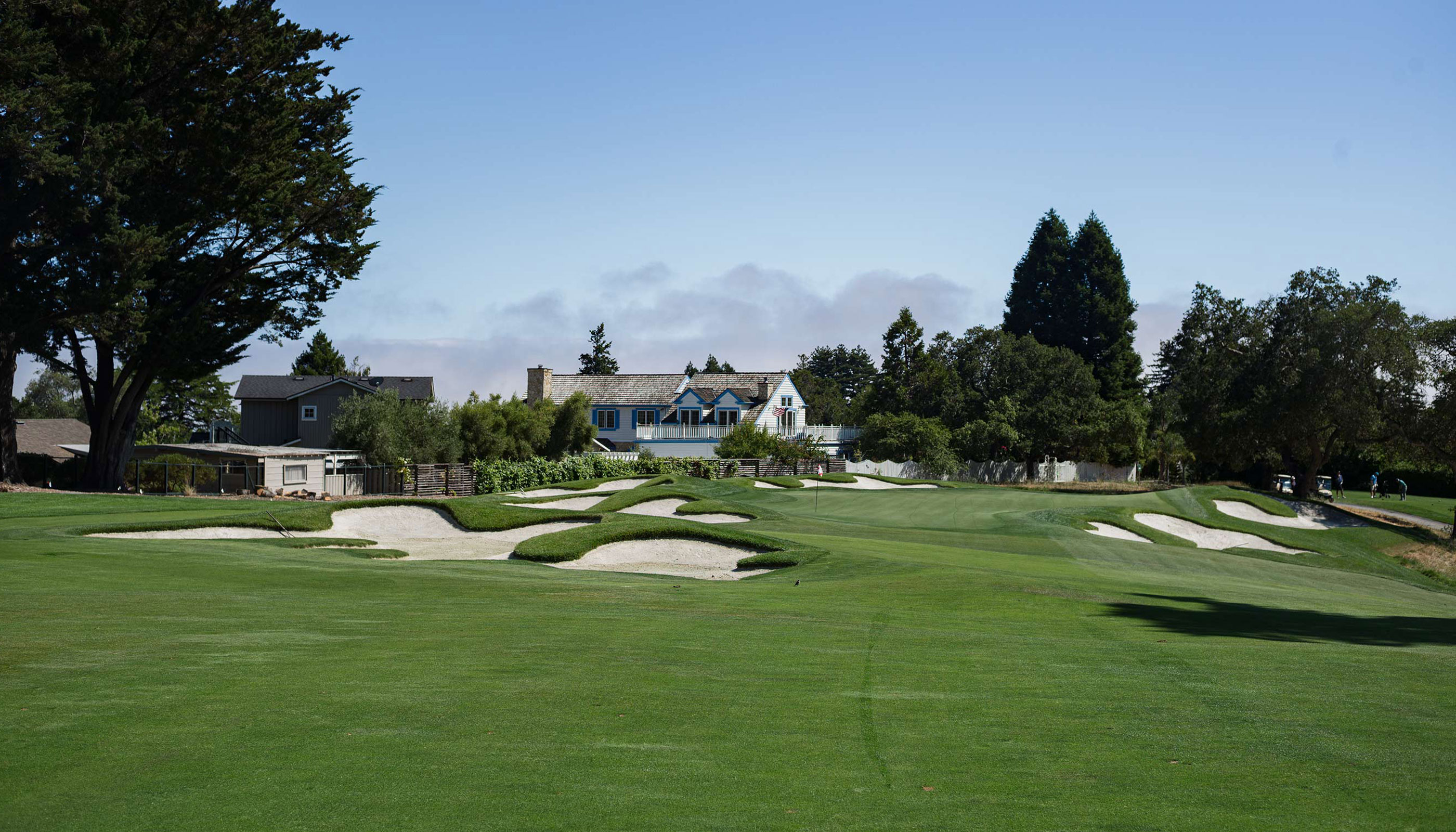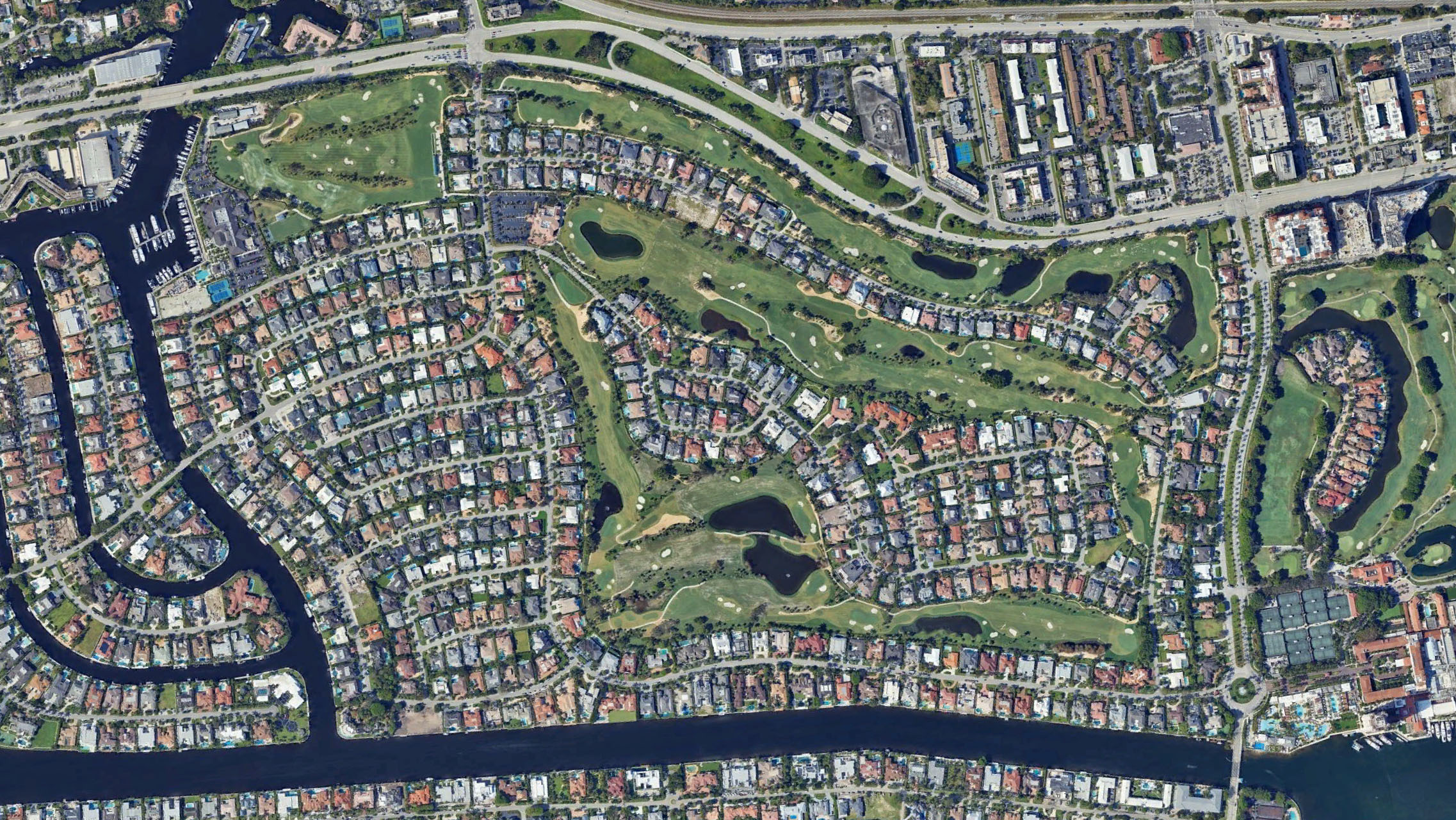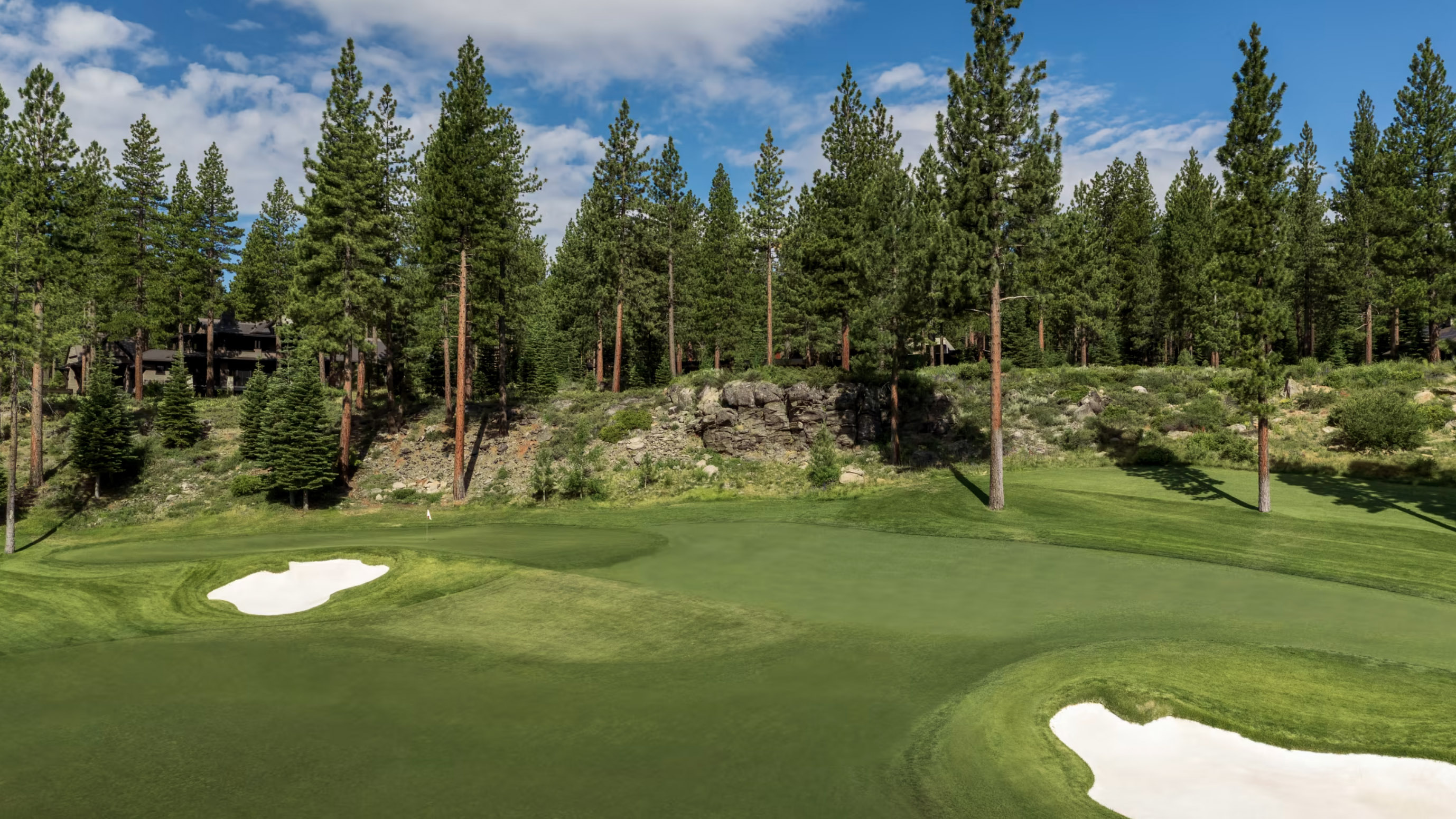Residential Golf Course Architecture Can Be Great
Quality is often sacrificed for profit, but not always


Residential golf courses have a bad reputation in golf architecture circles. Is there any golf nerd who enjoys golf hole after golf hole lined with rows of cookie-cutter houses, where inaccurate players are at constant risk of losing a ball in someone’s backyard or smashing a window? Such a relationship between golf and real estate also negates the scenic element of the game. Houses block views. You may get glimpses of porch-dwellers and swimming pools but not of other golfers, trees, other natural vegetation, unique topography, or distant mountains.
Yet despite these clear drawbacks of most residential golf courses, it would be foolish for the ardent golf traveler to disregard every course built alongside housing. Not every residential course is overloaded with ugly houses. Some developers make sure to keep natural elements intact. Some even build beautiful houses that satisfy the architectural tastes of aficionados as much as the features of the golf course do. In addition, skilled golf architects can create such inspired strategy and shaping that the displeasing housing arrangements suddenly become secondary to the quality of the course itself.
Residential golf courses, in truth, come in all shapes and sizes. They can range from the dullest of the dull, which no one should even pay $50 to play, to top-100 contenders worth a road trip to go see. Which type of residential golf course you are likely to encounter has a great deal to do with where you are and when it was developed.
Most associate the proliferation of housing-development golf courses with the post-World War II suburban boom in the United States. However, the idea of planning a golf course to enhance a community of residences has much older origins. In 1912, on a piece of beautiful heathland in Weybridge, northern Surrey, next to the world’s first purpose-built banked oval racetrack, local builder Walter George Tarrant sought to create a community of expensive estates called St. George’s Hill, with luxury golf and tennis facilities to attract London’s upper classes. After acquiring nearly 1,000 acres of land, Tarrant hired Harry Colt to design the golf course, which weaves its way through a number of exterior homesites and around a few interior ones. Home properties are found next to every hole at St. George’s Hill, although tree planting and growth, along with the world-class collection of golf holes, means the golfer scarcely notices.
{{residential-golf-st-georges-hill-gallery}}
In the United States, a similar idea occurred to Frederick S. Ruth. On a naturally outstanding property south of Orlando, Florida, Ruth founded a development called Mountain Lake in 1915, meant to be a winter getaway for the American “business elite.” On some of Florida’s most interesting and undulating land, Ruth engaged famous land planner Frederick Law Olmsted Jr. to design the community, and golf architect Seth Raynor to lay out the course. With no expense spared, Mountain Lake attracted an impressive clientele when it first opened, and still stands today as one of the state’s great displays of beauty, opulence, and old money, not to mention classic golf architecture.
Throughout the ensuing Golden Age of golf architecture, golf and housing were often twinned. Behind the creation of the beloved golf courses of the Monterey Peninsula, including Pebble Beach Golf Links and Cypress Point Club, there was a real estate scheme directed by Samuel F.B. Morse’s Del Monte Properties. Bel-Air Country Club was a “housing-development course.” So was Pasatiempo Golf Club.
{{residential-golf-gallery}}
In all, early attempts at planning a golf course alongside a residential community sought to take advantage of golf as a rich man’s pastime. After World War II, however, the intention of housing-development golf courses changed, especially in the U.S. No longer were they built to attract the most affluent. They were intended to serve the housing and sporting demands of a growing middle class, while lining the pockets of developers.
Postwar developers found that if a house bordered a golf hole, its value increased. This led quickly to a maximizing practice: the construction of golf courses with houses lining both sides of every hole. While such courses appeared all around the United States, they were particularly prevalent in Florida, the fastest-growing state in the 1950s (and indeed during the entirety of the 80-plus years since the end of World War II). It is these courses, often with completely flat properties, boring shaping, and “double-loaded” golf holes, that attract the ire of golf purists, and not without reason. Take Royal Palm Yacht and Country Club (1960) in Boca Raton, a classic South Florida development with a course designed by the most in-demand architect of the period, Robert Trent Jones. While not every hole is “double-loaded,” a few are, and efforts were clearly focused on maximizing the value of homes rather than ensuring a quality golf experience. Homes, not golf holes, occupy the most scenic part of the property, the Intracoastal Waterway, and the course’s back nine acts as a buffer between homesites and the highway.

These formulaic, housing-laden courses were built in spades through the second half of the 20th century — not just in the United States, but also in South Africa, Australia, and other golf-rich countries. Good design still seeped through the cracks, however, thanks to the creativity of some architects. Harbour Town Golf Links, the Nicklaus Private and Pete Dye Stadium courses at PGA West, and Hope Island Golf Resort on the Gold Coast of Australia are a few that stand out.
Ever since the worldwide shock of the Great Recession, such profit-driven residential golf projects have dwindled. Golf courses simply don’t increase the value of adjacent homes as much as they used to. In fact, evidence suggests that 21st-century homebuyers may actively avoid proximity to courses. They may be attuned to the potential risk of the golf course closing and leaving an unpleasant patch of overgrown grass next to their backyard, or to the very real and immediate risk of wayward golf balls.
Instead, a wave of high-end, residential getaway golf courses have been built in the post-Recession period. Many of these have consciously harkened back to the original luxury golf developments of the Golden Age. These courses — mostly in scenic, travel-worthy parts of the U.S. — are typically part of a resort complex or amid expensive second-home sites and their accompanying amenities. The developers find attractive pieces of land and hire big-name architects to put their communities on the map. Martis Camp, near the ski town of Truckee, California, is a thriving, high-end vacation-home community with a number of social and sporting amenities, including a Tom Fazio golf course where Scottie Scheffler won his U.S. Junior Amateur. The homes that line the golf course are not only beautiful but far enough removed from the fairways, and respectful enough of the natural Sierra Nevada mountain vegetation, to avoid diminishing the playing experience.

So when golf architecture enthusiasts rail against “residential golf,” they are mostly referring to developments from the post-War era. Residential golf, though, can be great, if created in an attractive setting that is tastefully master planned. It is a shame that golf communities built for the middle class have often sacrificed quality for maximal profits. Many of those are currently struggling. However, it’s a good sign prominent contemporary architects like Bobby Weed (at Stillwater Golf and Country Club) and Art Schaupeter (at TPC Colorado and Bella Ridge Golf Club) have taken on intriguing golf course projects for communities at a more modest price point in recent times. Let’s cross our fingers that more affordable, interesting residential golf will be built in the future.
Leave a comment or start a discussion
Engage in our content with thousands of other Fried Egg Golf Club Members
Engage in our content with thousands of other Fried Egg Golf Members
Get full access to exclusive benefits from Fried Egg Golf
- Member-only content
- Community discussions forums
- Member-only experiences and early access to events












Leave a comment or start a discussion
Lorem ipsum dolor sit amet, consectetur adipiscing elit. Suspendisse varius enim in eros elementum tristique. Duis cursus, mi quis viverra ornare, eros dolor interdum nulla, ut commodo diam libero vitae erat. Aenean faucibus nibh et justo cursus id rutrum lorem imperdiet. Nunc ut sem vitae risus tristique posuere. uis cursus, mi quis viverra ornare, eros dolor interdum nulla, ut commodo diam libero vitae erat. Aenean faucibus nibh et justo cursus id rutrum lorem imperdiet. Nunc ut sem vitae risus tristique posuere.